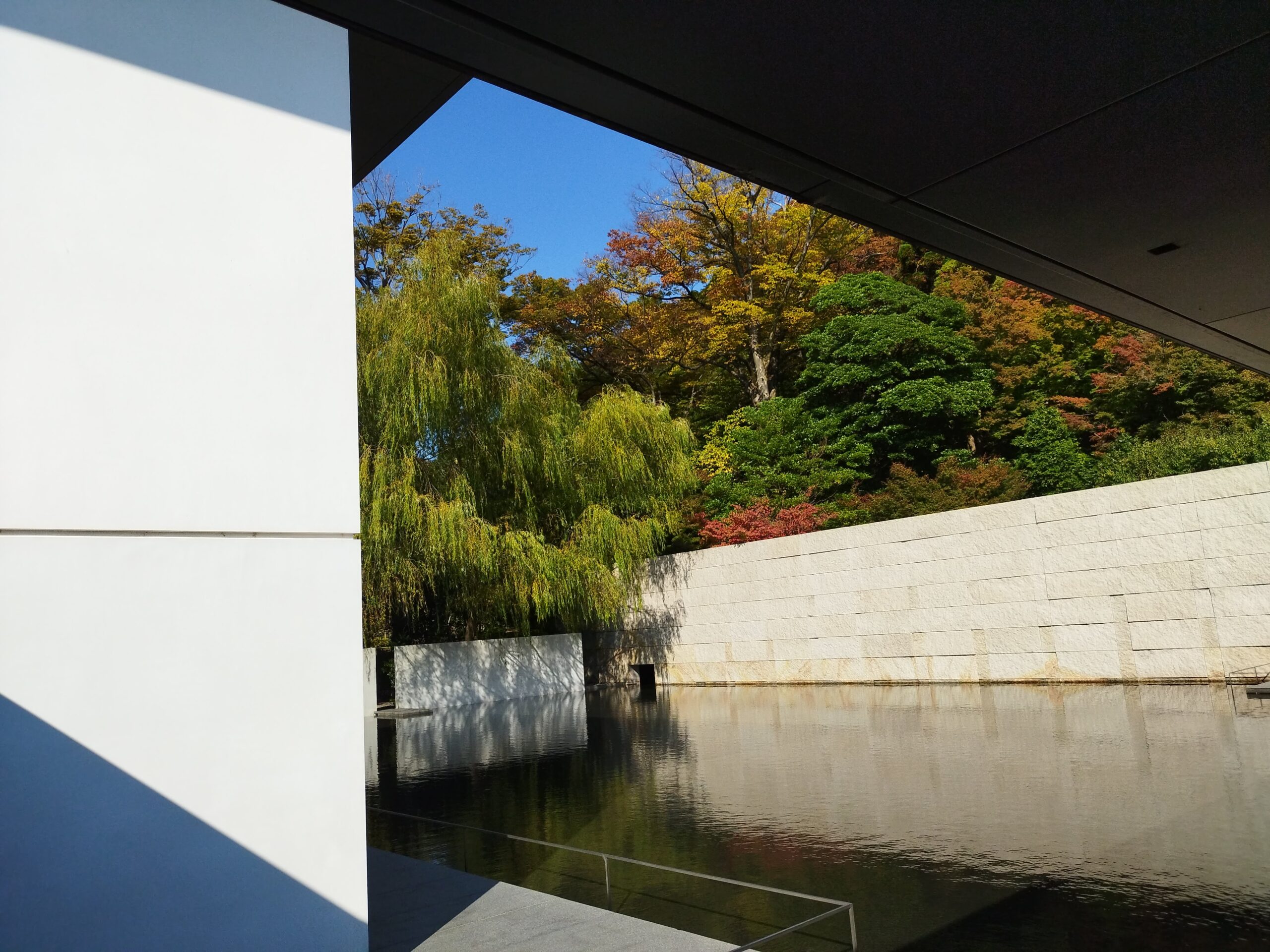1. Welcome to a Virtual Tour Guided by a Local
Since this is a fairly long tour, it is strongly recommended that you join only one part of the tour only when you want a change of pace. I hope you don’t let this be a long and wrong tour❤
This blog explores the D.T. Suzuki Museum, dedicated to a world-renowned Zen scholar, a philosopher who bridged East and West, and a pioneer who introduced Japanese spirituality to the world. While official websites provide formal, detailed introductions, this blog takes you on a locally guided virtual (imaginary) tour, answering common questions and presenting each exhibit in an easy-to-understand and engaging way.
👉 Note: If you’re looking for an in-depth, academic explanation, please refer to the official website or those of travel agencies.
For foreign visitors, business guests, and students exploring Japan, We invite you to experience these stories firsthand. Come and discover the charm of the D.T. Suzuki Museum—we look forward to welcoming you!
1. Quick Overview: D.T. Suzuki Museum
Before you step into the D.T. Suzuki Museum, let’s start with a brief introduction. This overview is divided into two sections, introducing two key figures who shaped the museum: D.T. Suzuki, the renowned philosopher, and Yoshio Taniguchi, the architect behind its design.
For those unfamiliar with their contributions, here’s a concise way to grasp their significance—just 10 phrases for each!
1.1A D.T. Suzuki: Key Descriptions
- A renowned philosopher
- A world-renowned Buddhist philosopher
- A leading Zen scholar
- A pioneer in Japanese Buddhist thought
- An eminent Buddhist scholar
- An international thinker in comparative philosophy
- A world authority on Zen Buddhism
- A cultural figure who introduced Japanese spirituality globally
- A philosopher bridging Eastern and Western traditions
- A visionary in comparative thought studies
1.1B Yoshio Taniguchi: Key Descriptions
- A renowned architect
- A world-class modern architect
- An internationally acclaimed designer
- A leading figure in contemporary architecture
- A master of modernist architecture
- A creator of minimalist and serene spaces
- An architect embodying Japanese aesthetics
- A designer who crafts harmonious museum environments
- A pursuer of architectural simplicity
- A visionary in museum architecture
1.2 Summary Description Upon Entry
Before you enter the D.T. Suzuki Museum, here’s a brief overview to enhance your experience. This explanation is divided into three steps, tailored to different visitor backgrounds and interests.
1.2A For General Visitors (4 Distinct Insights!)
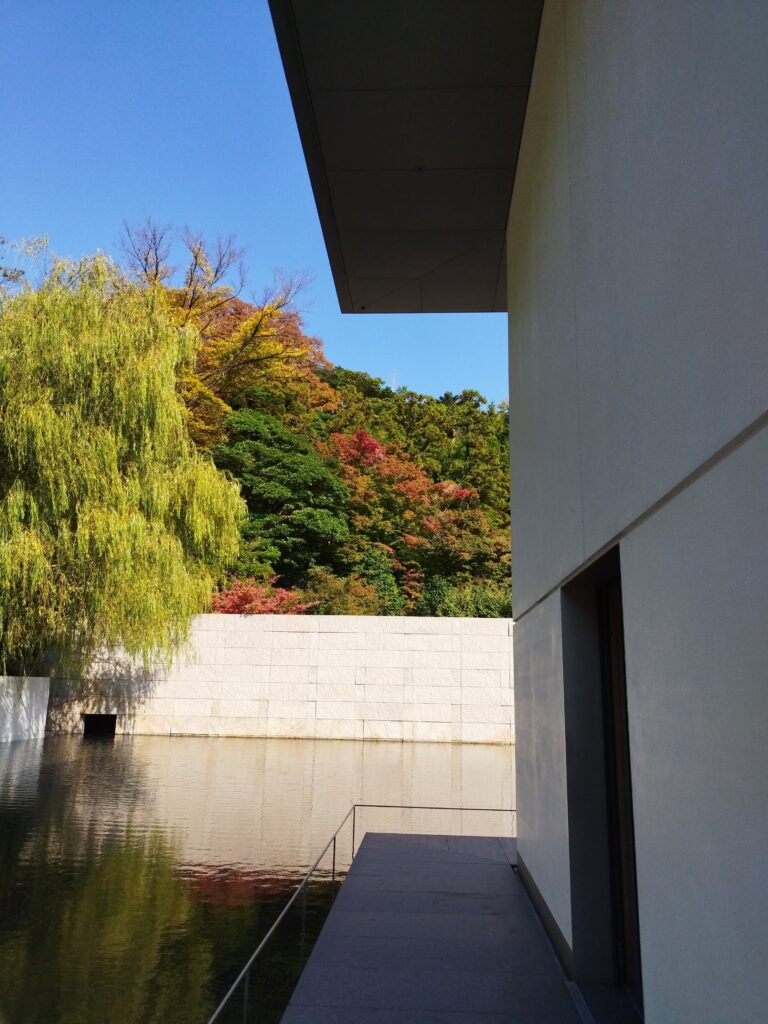
- The museum endeavors to convey his Zen philosophy as fully as possible through a minimalist approach to exhibits.
- The building successfully creates a philosophical atmosphere, drawing inspiration from his birthplace and the quiet, contemplative environment that nurtured this great Zen philosopher.
- This museum, created about ten years ago, represents a historically significant fusion by a globally renowned architect for this Zen philosopher, both of whom shared a profound appreciation for simplicity and minimalism.
- This unique museum embodies his intangible concept of ‘nothingness’ through tangible architecture, perfectly reflecting his Zen pursuit of that very state.
1.2B For Non-Native English Visitors (3 Unique Perspectives!)
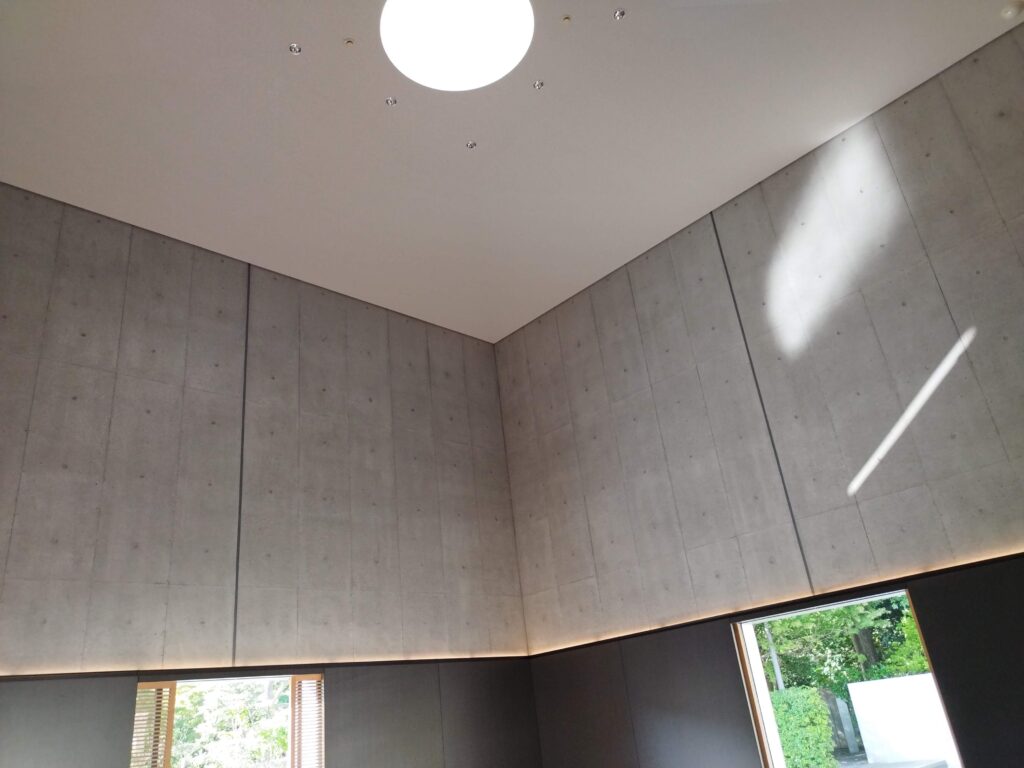
- This museum doesn’t display many objects. Instead, it offers a space for visitors to meditate, much like a Zen temple.
- Visitors hoping to learn many facts about him might be disappointed. However, they may experience his core idea of ‘nothingness’ directly through the minimal displays.
- This museum invites you to reflect on its value. You might find the experience deeply meaningful, or perhaps less so, which can be a personal discovery.
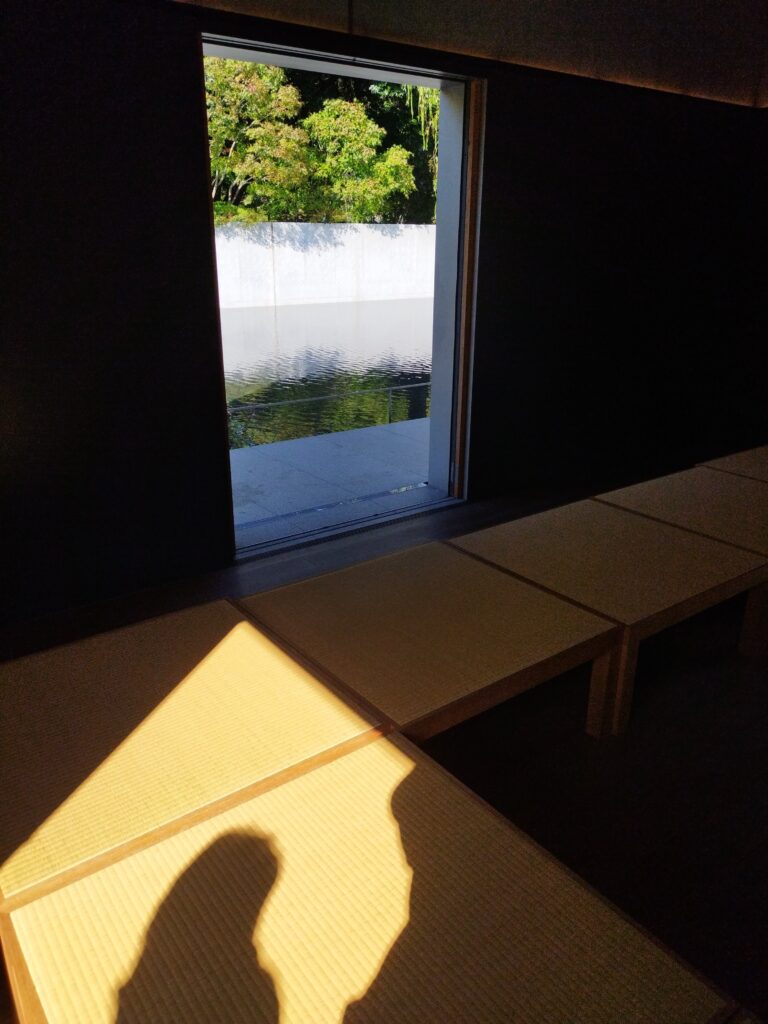
1.3C In Short (2 Key Takeaways for American Guests!)

- More like a Zen temple than a typical museum, this reinforced concrete building is a must-visit for Zen enthusiasts.
- This simple-looking museum beautifully expresses his Zen ideal of ‘nothingness’.
2. Virtual Tour: Exploring Each Exhibit
The following explanations bring a lighthearted twist to the usual descriptions, incorporating Japanese cultural nuances to captivate virtual foreign visitors like you and inspire an in-person visit.
👉 Rest assured, more detailed and conventional explanations await you on-site
Q1: What Does the Name D.T. Suzuki Mean?
This story emerged from a common question asked during guided tours: What does the name D.T. Suzuki mean? To make it more engaging, I’ve divided it into two parts—a serious explanation (1–5) and a playful take (6–10) for a touch of humor!
- His real name is “Suzuki” as a family name and his first name is “Teitaro”.
- He has the added Dharma name “Dai-setz,” which is given to a top-class Buddhist layman, and is said to have been named by his Buddhist mentor.
- The literal meaning of “Dai-setz” is “very unskilled,” but his mentor’s intention was “No mending, just being”.
- In other words, he was said to mean “very skillful” with this Dharma name.
- Therefore, in English, it is called “Daisetz Teitaro Suzuki,” or “D.T. Suzuki” for short.
- But if you don’t pronounce it well, it can sound like Diety Suzuki (God! Suzuki).
- Because of the spiritual significance with which he enlightened the world about Zen, some may mistakenly assume ‘Deity Suzuki’ as his correct name.
- Come to think of it, sometimes we see people bowing as they enter the D.T. Suzuki Museum, so for them, this building may be akin to a shrine dedicated to him.
- However, as a Buddhist philosopher, he might be displeased in the afterlife at being treated as a shrine and seeing visitors bending their heads when entering his museum.
- Before his death, he often used to say that “No mending, just being”, so perhaps he would be displeased, saying, ‘No bending, just seeing’?
Q2: What Is the Purpose of This Triangular Alcove?
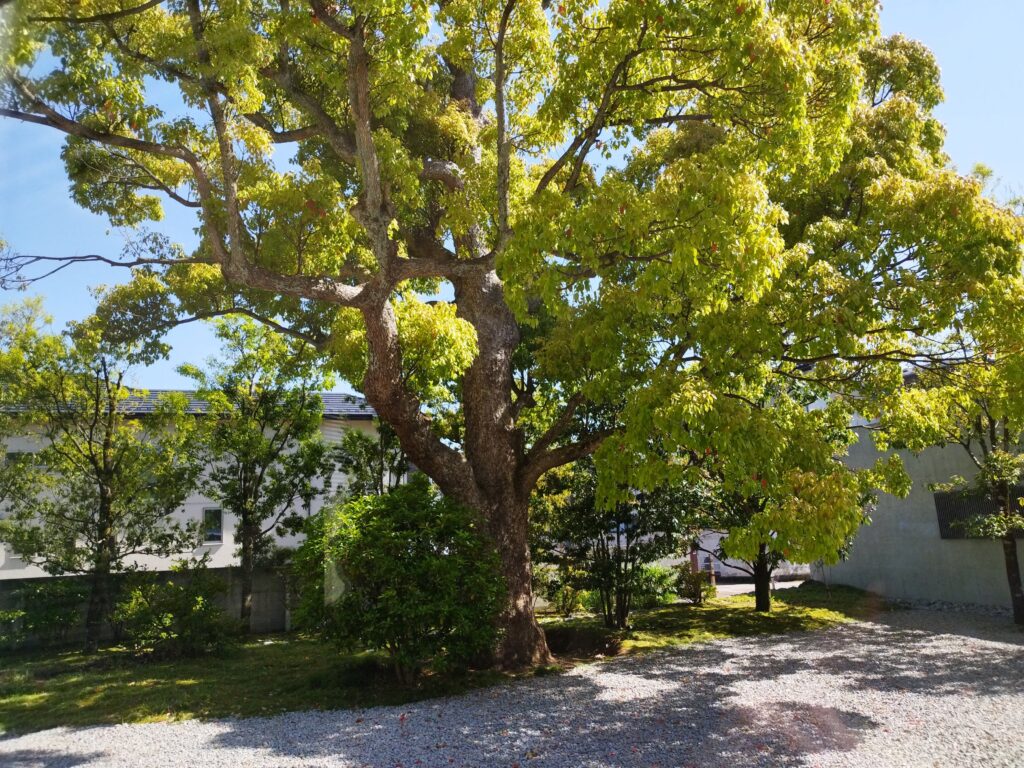
Upon entering, visitors will notice a triangular protrusion in the middle of the straight aisle—an intentional architectural element. This story explores its significance while weaving in expressions related to camphor trees and nature.
Like before, this explanation has two parts: a serious section (1–7) followed by a playful take (8–13) for a bit of humor!
- This alcove was made to appreciate the garden in front of you and especially that camphor tree.
- Surprisingly, that camphor tree was already there when D.T. Suzuki was a child, and it is said that he grew up looking at it.
- Camphor trees were also planted artificially and cherished since ancient times because people can extract camphor, which is used as medicine.
- Camphor, used as a drug, was specifically injected to stimulate the heart and increase blood pressure.
- It’s intriguing to imagine that the young Suzuki may have drawn inspiration from this tree, using Zen as a mental camphor for weary modern individuals.
- Above all, extracting camphor medicine from camphor wood include a distillation process, which requires a great deal of time and patience.
- Maybe the patience with which he spread Zen worldwide was also influenced by that camphor tree.
- Come to think of it, not only D.T. Suzuki but every person’s personality is, to some extent, influenced by the trees they grew up looking at in childhood.
- For example, a close friend of mine had a persimmon tree and a fig tree in his garden when he was young. He always had a tendency to seek immediate and effortless rewards.
- Perhaps because he could simply pluck the fruit whenever he wanted, enjoying its delicious taste with no effort or patience?
- If trees do shape our early tendencies, maybe his easy access to persimmons and figs set him up to expect life’s rewards to be equally effortless!
- As the concept of forest bathing suggests, trees don’t just affect childhood development—they also influence the people who view them.
- That’s why, when I guide guests, I always make sure to explain this camphor tree—so they can cultivate a little more patience during my ‘incredibly fascinating yet surprisingly long’ tour!
☞ Ad: Recommended Travel Insurance (Partner Link)
For peace of mind during your travels, here’s a recommended insurance option—offering reassurance much like the medicinal benefits of camphor described above.
Unlike camphor extraction, which requires time and patience, securing the right travel insurance is quick and effortless—saving you both time and worry so you can explore with confidence, knowing you’re protected!
Q3: What Do the ○△□ on This Hanging Scroll Mean?
While exploring the exhibition corner, visitors often ask about the meaning behind this hanging scroll featuring a circle (○), triangle (△), and square (□).

This explanation, as always, has two parts—a serious interpretation (1–7) followed by a lighthearted take (8–15) for a bit of fun!
- This drawing on the hanging scroll is by D.T.’s hand, but the figures—a circle (○), a triangle (△), and a square (□)—are not his original creation.
- Originally, this was painted during the samurai era by a Zen monk who was also a painter, and it has been interpreted in many ways, with its true meaning remaining unresolved.
- Zen teaches the principle of not using words to instruct, but instead letting people realize truths by themselves, often using the traditional method of Zen questions and answers.
- The aim is to encourage people to think independently and discover some form of truth by presenting them with various riddles that have no clear answers, and this painting is considered an example of a Zen question and answer.
- Daisetz interpreted this as a representation of the universe and referenced it in various places beyond just hanging scrolls.
- According to him, the circle (○) represents infinity, the triangle (△) is the source of everything, and the square (□) is formed by two triangles (△) stacked together.
- His interpretation is that the universe is an endless series of these stacking processes with triangles, leading to an infinite array of events.
- But for laymen like us, such esoteric Zen questions and answers are far beyond our comprehension.
- Perhaps many people, especially when they are hungry, might associate oden, traditional Japanese simmered vegetables, with this figure—○△□—on a skewer.
- A famous Japanese anime features a character who always walks around with this skewered oden.
- The circle (○) looks like a sliced radish or boiled egg, the triangle (△) looks like konjac (Devil’s Tongue), and the square (□) looks like kamaboko, a fish cake.
- Can we assume that the circle (○) represents the never-ending appetite, and the triangle (△) constitutes the basis of food, like trial tasting in daily life?
- The square (□) literally seems to mean ‘square meals,’ decent meals that can be completed with repeated, everlasting trial tastings.
- The ascetic Zen monk who associates the figure with the universe is in stark contrast to us mere mortals who associate it with our appetites.
- But after eating delicious meals, of course, there is nothing left afterward, so we may be able to achieve the Zen ideal of ‘nothingness’!

Q4: What Does This Water Mean?
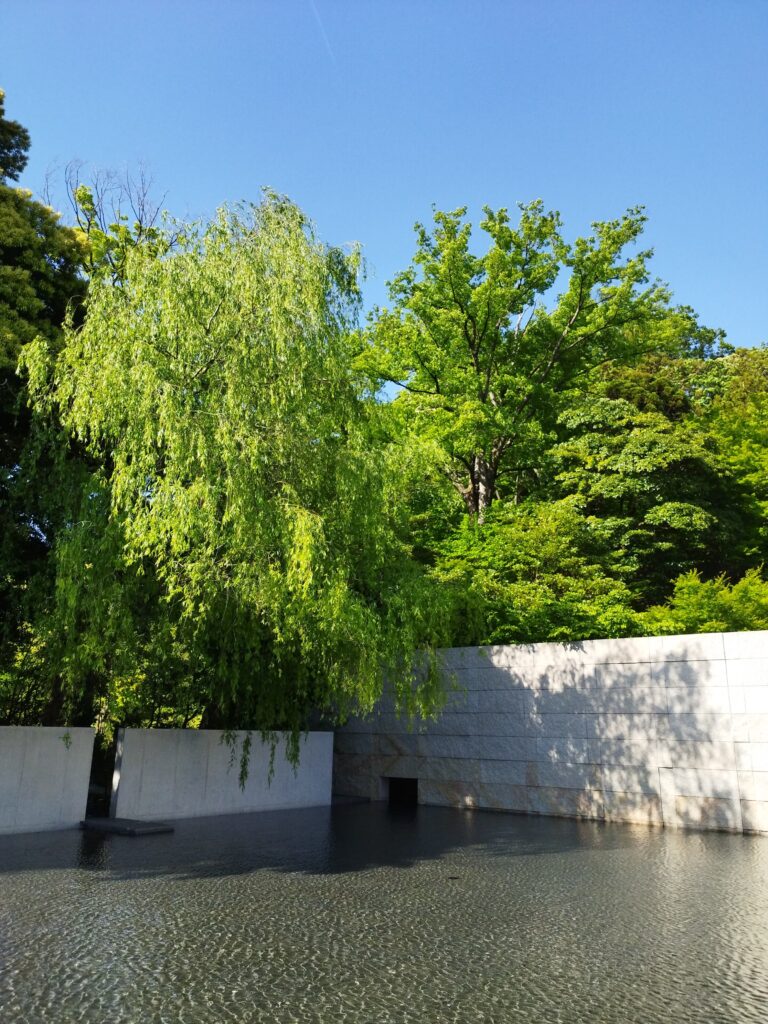
The Water Mirror Garden stands as the centerpiece of the D.T. Suzuki Museum, a space carefully designed to reflect the ○△□ motif, a central theme in both Suzuki’s philosophy and the museum’s architecture.
Like before, this explanation is divided into two parts—a serious section (1–5) to enhance visitors’ expectations, followed by a lighthearted take (6–10) for a playful twist!
- This is called the Water Mirror Garden, and according to those involved, it reflects D.T. Suzuki’s view of the universe: ○△□.
- The ripples on the water surface signify ○ (circles), the simplified eaves and floor corners represent △ (triangles), and the garden’s outline and paving stones embody □ (squares).
- The renowned architect who designed this building also has a famous museum in Tokyo that features a similar water mirror—widely considered his signature motif.
- His philosophy shines through in this minimalist design, stripped down to its purest form, much like a water mirror itself.
- The building’s presence is emphasized by a simple interplay of lines and surfaces, free from unnecessary ornamentation.
- But I always make a point not to dwell too much on expert interpretations.
- Some guests who initially enjoyed the water mirror simply as it was later found themselves uneasy with such analyses.
- Additionally, as the D.T. Suzuki Museum is a place for meditation and learning, normal guided explanations are not allowed.
- And beyond that, there’s another reason I don’t explain much:
- In keeping with the spirit of this great thinker and architect, my explanations as a guide follow the same philosophy—pared down to the bare minimum!
🔶Thank you very much for reading to the end of this issue. If you have any comments or requests, please feel free to contact us at the Help Desk.🔶
